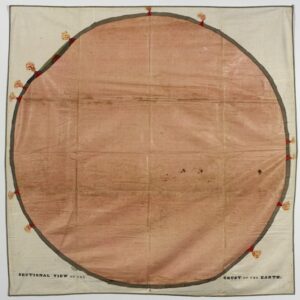About Dickinson’s Birds: A Listening Machine
“Went wandering down the Latitudes –” —E. Dickinson, Fr177A
In the avalanche of messages that we are now receiving from the Earth in the form of disrupted natural cycles and unprecedented ecological losses, birds and poems may be special messengers passing through the eye of the environmental needle, revealing how to live in the whirlwind temporalities, radical shifts in scale, and entanglement of human and more-than-human nature that are the conditions—the dark gifts—of the Anthropocene.
Dickinson’s Birds had its beginnings in a series of questions focused on these messengers: How could we make a virtual book of Dickinson’s birds—that is to say, her poems, that is to say, the birds of her world—for readers in the Anthropocene that would not be a snare? How could an archive of Dickinson’s birds “conjure an awareness of what accepted categories cannot contain, what familiar taxonomies cannot order, what one medium cannot express”? [1] How could an archive not turn into an exhibit, with all its ties to the old cabinet of curiosities and, worse still, the specimen case, but become instead a miscellany and a murmuration? [2]
A digital-humanities work of the “third wave,” Dickinson’s Birds is necessarily a hybrid work, drawing on elements of the documentary archive and the environmental installation to invite new questions at the intersection of poetics, ecology, and ethics. Here, however, the conception of the archive as a human-made and centered site for storing—holding forever in place—the precious fragments from a human past, is traded for an imagination of the archive as a living, entropic site whose vitality inheres in its involvement in both cultivating and decomposing its contents. First designed as a shelter for lyric poems and birdsongs, Dickinson’s Birds ultimately seeks the de-archivization of poems and birds, words and sounds. As a site that is always passing over and passing by, Dickinson’s Birds engages us in the durational, contingent and vulnerable nature of sounding, singing, writing, listening, and falling silent in the complex ecological meshwork that is our common, only, and last home.
While opening the always partial but tantalizing possibility of accessing past worlds, Dickinson’s Birds is also a screen or “blind” through which the data of worlds—Dickinson’s remote world, our more immediate world, and the future world without us—flickers. What is visible and audible is illuminated as existing side by side and simultaneously with all that is invisible and inaudible. What is revealed exists adjacent to and concurrent with what remains hidden. As such, Dickinson’s Birds is part of an experiment in inhabiting the Anthropocene—especially as that experience entails the welcoming of ambiguity, the letting go of the human as a privileged category of thinking, and the embracing of our existence as “strange strangers” [3] among an infinite number of other “strange strangers.”

![]()
[1] See Lisa Pearson’s It is Almost That: A Collection of Image + Text Works by Women Artists & Writers (Siglio, 2011), 280.
[2] The first meaning of murmuration is sonic: the action of murmuring, i.e., making a soft, indistinct sound, sometimes at a distance. For a brief but interesting note on starling murmuration, see https://www.wired.com/2012/03/starling-flock-dynamics/. For a video of this phenomenon, see also https://petapixel.com/2020/04/02/this-video-captures-the-mesmerizing-patterns-traced-by-a-flock-of-starlings/.
[3] See Timothy Morton’s The Ecological Thought (Cambridge, MA : Harvard University Press, 2010).